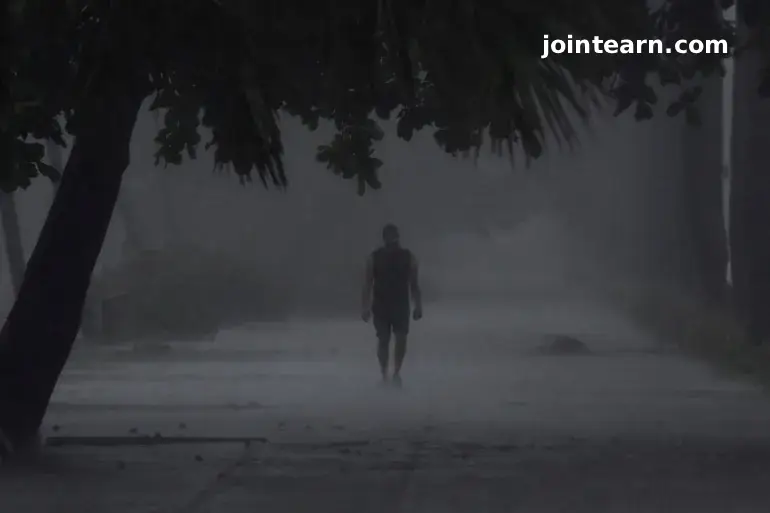
Tropical Storm Melissa continues to churn through the central Caribbean, threatening Jamaica, Haiti, and the Dominican Republic with torrential rainfall, deadly floods, and powerful winds as it strengthens into what forecasters warn could become a major hurricane by the end of the weekend.
Storm Strengthens Over the Caribbean Sea
As of early Friday, the US National Hurricane Center (NHC) in Miami reported that Tropical Storm Melissa was located about 150 miles (245 km) southeast of Kingston, Jamaica, and 270 miles (430 km) southwest of Port-au-Prince, Haiti. The storm was moving slowly northward at just 3 mph (6 km/h), carrying maximum sustained winds of 45 mph (75 km/h).
Meteorologists warn that Melissa’s sluggish pace and erratic movement could make its impact more dangerous, increasing the risk of catastrophic flash flooding, mudslides, and coastal surges in low-lying regions of southern Haiti and eastern Jamaica. By Sunday night, the storm is expected to reach Category 3 strength, potentially escalating to a Category 4 hurricane by Tuesday.
“People must not underestimate Melissa,” said Matthew Samuda, Jamaica’s Minister of Economic Growth and Job Creation. “Its current speed and intensity can change in a moment’s notice.”
Fatalities and Damage Reported in Haiti
Haiti’s Civil Protection Agency confirmed that the storm has already claimed at least one life—an elderly man killed by a falling tree in the coastal town of Marigot in southern Haiti. Five others were injured in Artibonite Province, where flash floods swept through several rural communities.
The United Nations said more than 100 emergency shelters have been prepared across Haiti’s southern region. However, widespread erosion, ongoing gang violence, and limited infrastructure make effective disaster response extremely challenging. Many residents remain vulnerable due to poverty, displacement, and crumbling homes still unrepaired from previous storms.
“This storm could not come at a worse time,” said a UN humanitarian coordinator in Port-au-Prince. “Communities are still recovering from past hurricanes and economic collapse.”
Dominican Republic Hit by Floods and Landslides
In the Dominican Republic, Tropical Storm Melissa unleashed heavy rain and gusty winds, knocking out water supply systems that serve more than half a million residents. Trees and traffic lights were brought down, and small landslides were reported in mountainous regions near Santo Domingo and Barahona.
Authorities have closed all public schools nationwide and suspended operations at government offices in 12 provinces under red alert. Officials warned that rainfall totals could reach 14 inches (36 cm) in some areas, especially along the storm’s eastern edge, where the ground is already saturated from weeks of prior rainfall.
Jamaica Braces for Potential Hurricane Conditions
The Jamaican Meteorological Service has issued storm alerts across eastern and central parishes, including St. Thomas, Portland, and St. Mary. Residents have been advised to stock up on essentials, secure their homes, and prepare for widespread power outages and flash flooding.
“The situation is serious,” Samuda warned. “We urge citizens to remain vigilant and follow evacuation orders if issued.”
Jamaica’s disaster preparedness teams are working with the Office of Disaster Preparedness and Emergency Management (ODPEM) to distribute sandbags, clear drainage systems, and set up emergency shelters.
Meteorologists Predict a Dangerous End to Hurricane Season
Tropical Storm Melissa is the 13th named storm of the 2025 Atlantic hurricane season, and notably, the first to form within the Caribbean basin this year. The US National Oceanic and Atmospheric Administration (NOAA) has predicted an above-average hurricane season, with 13 to 18 named storms expected, including up to five major hurricanes with winds exceeding 111 mph (178 km/h).
Melissa’s development underscores concerns about climate change and rising ocean temperatures, which scientists say are fueling stronger and more erratic tropical systems across the Atlantic and Caribbean.
“We are seeing storms intensify more quickly than ever before,” said Dr. Carla Williams, a climate researcher at the University of the West Indies. “Warmer sea surface temperatures provide ideal conditions for hurricanes to grow rapidly in strength.”
Regional Preparedness and Response
Emergency teams in Haiti, Jamaica, and the Dominican Republic are coordinating through the Caribbean Disaster Emergency Management Agency (CDEMA) to monitor Melissa’s track. Aid organizations have pre-positioned food, medical supplies, and clean water in anticipation of widespread disruptions.
Meanwhile, airlines have canceled flights, and ports in Kingston, Cap-Haïtien, and Santo Domingo have suspended operations until further notice. Local fishermen along the southern coasts have been urged to stay ashore.
Key Takeaways
- Tropical Storm Melissa threatens Haiti, Jamaica, and the Dominican Republic with deadly floods and landslides.
- The storm is forecast to become a major hurricane by early next week.
- At least one person killed in Haiti; hundreds displaced.
- Public schools closed and government offices suspended in the Dominican Republic.
- UN and local agencies mobilizing emergency aid across the region.


Leave a Reply